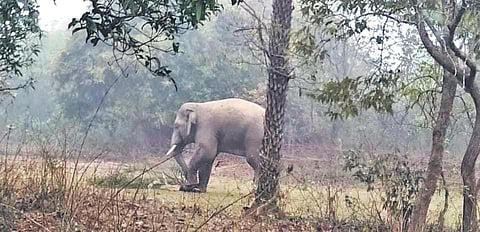

The government has come up with an amended Wildlife Protection Act (WLPA) and called for public responses. This is therefore the time for us to demand a relook at our flawed wildlife protection regime that has precipitated a humongous human-wildlife conflict throughout India. Under WLPA, people are not free to defend themselves against marauding animals as even driving them out of their homes and crop fields needs official permission. Yet the Indian Penal Code, Sections 100 and 103, sanction voluntarily causing death or any other harm to the wrongdoer if: 1) An assault by the wrongdoer may reasonably cause apprehension that death or grievous hurt will be the consequence; 2) If the offence involves the wrongdoer committing house or property trespass or robbery. Wild animals attack people, kill them and damage their property, and a senior police officer and a High Court judge have told me that WLPA is constitutionally invalid.
No other country has such a senseless act and bans hunting outside national parks, wildlife sanctuaries or game reserves. Hunting of some endangered species like wolves may be banned everywhere, but even that is actively encouraged with a bounty in the state of Alaska. Britain has shooting estates where as many as 12,300 wild mammals and birds are killed every day. Britishers and Americans shoot elephants, lions and impalas on game ranches in Africa to take home thousands of trophies.
There is an intrinsic tendency for animal numbers to increase unless checked by factors such as predation, diseases, limitation by resources like food or nesting holes, and accidental mortality such as through floods or landslides. Humans have played a dominant role in controlling wildlife populations since their origin three lakh years ago as group hunters on savannas of Africa. Indeed, hunting, whether for trophies or for the pot that WLPA criminalises, is a part of human heritage. Today, many Africans hunt bushmeat and Swedes hunt moose to consume as food.
Hunting had continued in India till the promulgation of WLPA in 1972 with Maharajas minting money inviting European tourists to hunt as their guests on their own game reserves. Naturally, with total cessation of hunting in India, the numbers of wildlife species have skyrocketed over the last 50 years, and the smart animals have learnt not to fear man. It is true that their habitat has been encroached upon, especially by urbanisation, highways, railways and mining, but even in cases where it is well-maintained as with Pench, Tadoba and Mudumalai Reserves, the tigers are now spilling out and killing people. So, more than a thousand people are killed by wild animals like elephants, panthers, tigers and sloth bears while tens of thousands are injured each year in India. Losses of crops and property run into thousands of crores. This is a crude estimate since the details are shrouded in a cloak of obfuscation.
The fudging of data by forest departments to hide corruption while blaming the people was strikingly brought out in the case of Sariska Tiger Reserve where these big cats had not been sighted since 1999. But forest department bosses were claiming that there were still 17 tigers in Sariska even in 2004. In response, the CBI undertook a two-month investigation and declared that no tigers were left in the reserve. Poaching was blamed for the disappearance of tigers. But who were the poachers? The CBI concluded that forest officials were undoubtedly involved. The skinned carcasses of the tigers were left lying around stinking for days. It is impossible that the officials would not have noticed all these carcasses and they were surely involved in the poaching racket. On the ground, all that happened was that the foresters rounded up and beat up many people from surrounding villages accusing them of being poachers, and, of course, no bureaucrat was ever held accountable.
Indeed, using the weapon of WLPA, a tyrannical regime controlled by the forest departments, has come to prevail all over our country. This oppression is counterproductive and has led to India sinking in the world rankings to 177 out of 180 in environmental performance and 139 out of 149 in happiness. We must therefore take a leaf out of Swedes, who declare that wildlife is a renewable resource that should be managed through regulated hunting involving decentralised decision-making by empowering local stakeholders. India is a pluralistic country with a diversity of cultures and ways of making livelihoods, associated with a variety of food habits and taboos. Today some groups of Indians eat not only goat and chicken but also dogs and monkeys, and no one has a right to impose their own food preferences on other citizens of the country. Our people at the grassroots are motivated to protect the environment and have many still living traditions of conservation. Ensuring that they can play their rightful role in our democracy is the challenge before us. If wild animals come out of national parks, sanctuaries and reserve forests, people of concerned local bodies should have the right to either demand payment for tolerating them or cull them and use the various body products as they wish. They may want to eat wild pig meat and establish a cottage industry to make hairbrushes from pig bristles. They may wish to protect monkeys as sacred animals and demand payment for conservation services; alternatively, they may cull monkeys, hygienically pack their meat and sell it to the Chinese or Africans. They may decide to make good money selling the tiger skin or its head as trophies, or ivory or elephant head trophies to Americans where they are in demand. What our country desperately needs is a full and fair play of reason, good sense and tolerance.
Eminent ecologist who headed the Western Ghats Ecology Expert Panel